STUDENTS PROJECTS
PROJECTS2015
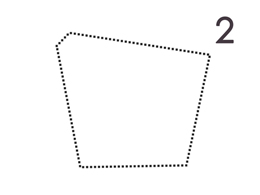
17 May, 2016
Designing a city block
The main cause of our research was the city of Athens and its numerous buildings, many of which age and remain without use.
Students : Elizabeth Papageorgiou-Koutoula, Papadi Theodora
Supervisors : Papaioannou Anastasis, Caradimas Constantinos
Advisors : Miha Irini, Papaioannou Maria
Presentation date : October 2015
The issue of our thesis project was the redefinition of a common city block in the area of Gyzi, Athens through a proposal that acts in two levels: a) the integration of the internal non-built area of the block, the "akalyptos" and b) the restoration and reuse of three old buildings to meet the inhabitants' needs. Our main goal was that all of our interventions should be governed by the principles of a sustainable and green architecture.
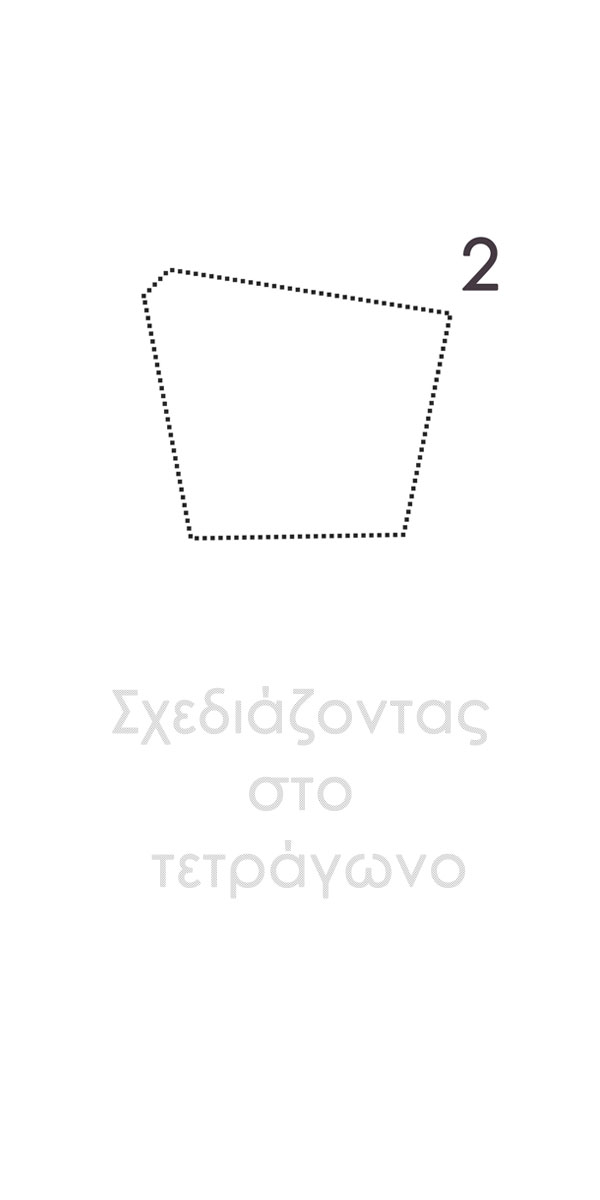
CAUSES AND GOALS
The main cause of our research was the city of Athens and its numerous buildings, many of which age and remain without use . So, we studied the "polykatoikia", the typical residential type of building, identifying its key problems such as the dysfunctional habitation areas, the lack of transitional spaces from public to private , the lack of adequate free space and the small area of "akalyptos" which is often inaccessible by all residents.
Then, we decided to address all these problems in a bigger scale, the scale of a city block, in order to achieve a better result through the design process. In addition, legislative problems like complex ownership and the necessary movement of residents during a potential intervention inside buildings, made our decision to "move" to a bigger scale an inevitable necessity.
During all of our research and work we tried to maintain the existing social cohesion, through mild design proposals concerning the residents of the block, with hope to improve their daily life.
AREA
Why at Gyzi? We selected the area of Gyzi due to its strategic location next to Alexandras Avenue, its tense topography which creates great views of the city, its green areas and the coexistence of old and new buildings that produce an interesting ridge.
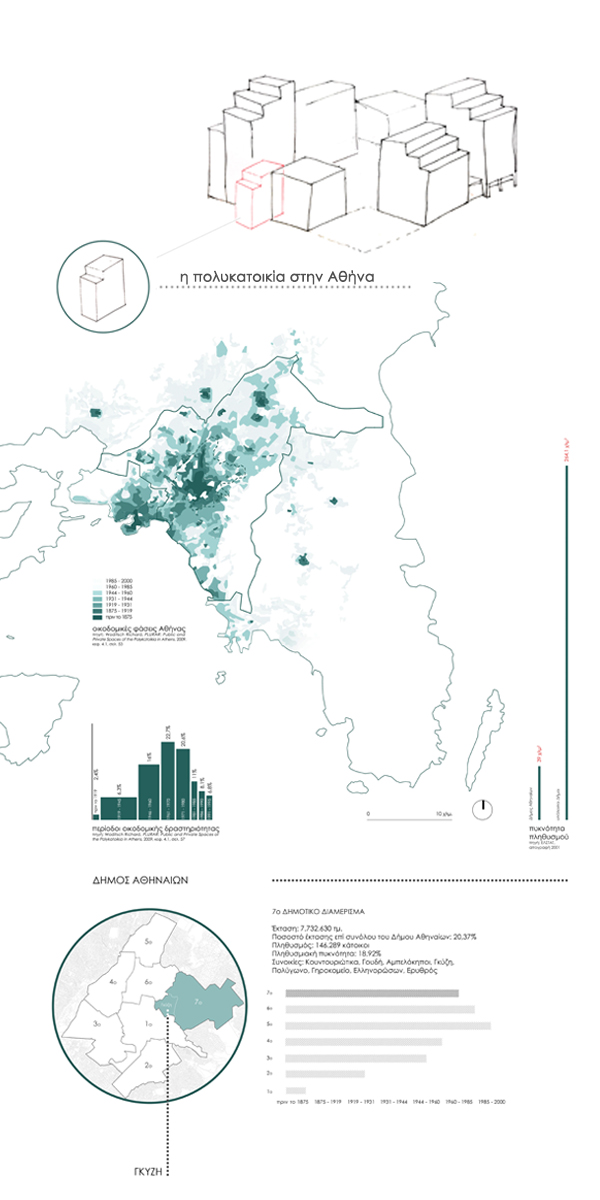
The area is surrounded by three basic parks of Athens, the "Pedion tou Areos" park, the Lycabettus hill and the hill of "Strefi", while the main commercial activity seems to be at the major roads.
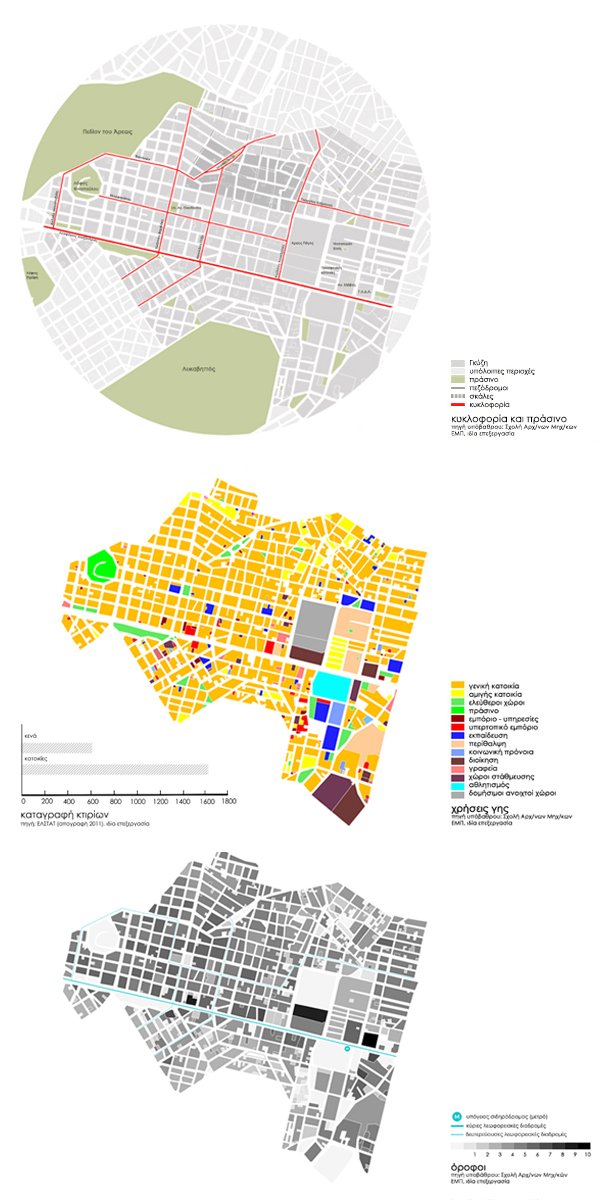
By simply walking through the area, we were intrigued by the square of Gyzi and its small park at Vergovitsis Street, which create a smaller neighbourhood where the topography is even more intense and reaches the highest spot of Gyzi. There are no longer roads, but stairs and pedestrian walks. There are and no cars, but trees. At this smaller area, we saw both old buildings and new ones, both tall buldings and short.
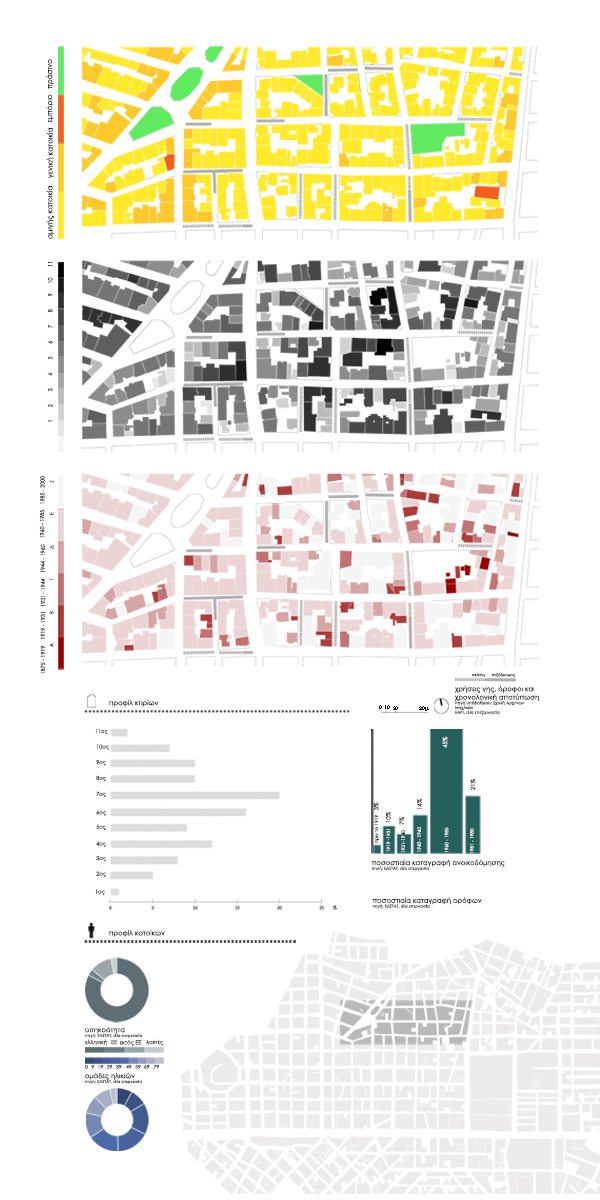
SELECTION CRITERIA
A part of this neighborhood was the block we selected at the intersection of Vergovitsis, Tsopanakou, Dimoulitsas Pargas and Alexandrou Palli Streets . We specifically selected this block because of its large and unified "akalyptos" area, its proximity to the park and its privileged position at the highest elevation point at Gyzi.
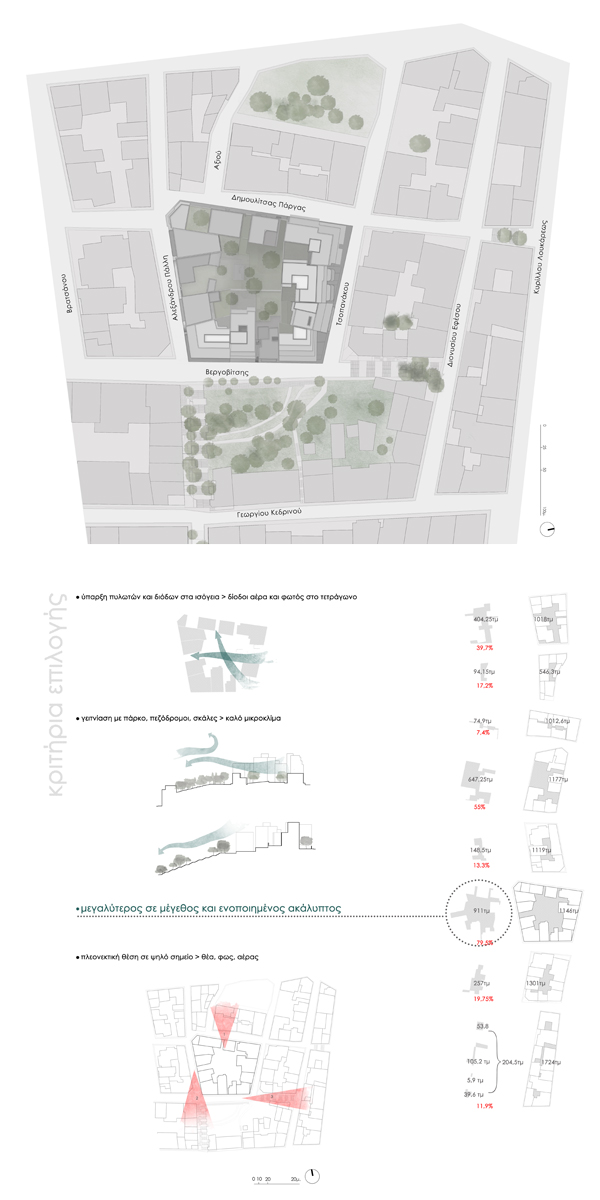
MASTERPLAN
Our proposal takes place at two levels, the "akalyptos" area and the buildings. At the area of the "akalyptos" we tried to achieve its integration through design, to create transitional spaces between the private (residence) and the public (road), to ensure accessibility by all the residents of the block, to create new activities for all ages, to protect the private backyards through plantation and restore and rehabilitate the soil to create crops.
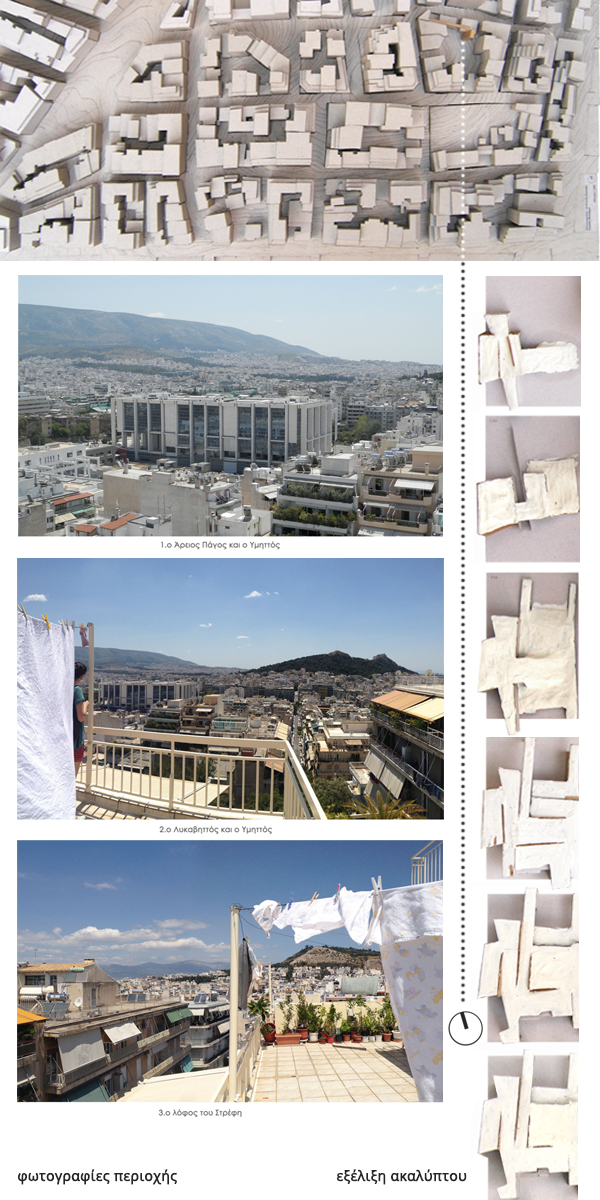
On the second level we worked our ideas on three abandoned buildings at Dimoulitsas Pargas Street creating uses of shared character for the inhabitants of the block, by connecting the buildings with each other and with the neighborhood. Our intervention was focused on the creation of a light structure made of wood and metal, which connects the three buildings and creates a two-direction movement, one horizontal and one vertical. The horizontal movement is defined by a two level path that passes through the buildings, while the vertical one is the central staircase of the first building which leads into a rainwater collection tank that functions as water tower.
As part of our energy saving actions in the block, we chose to plant the roofs of the three buildings, to create vertical gardens in the bare partitions, to collect rainwater in order to water the crops and, at last to create a communal laundry area.
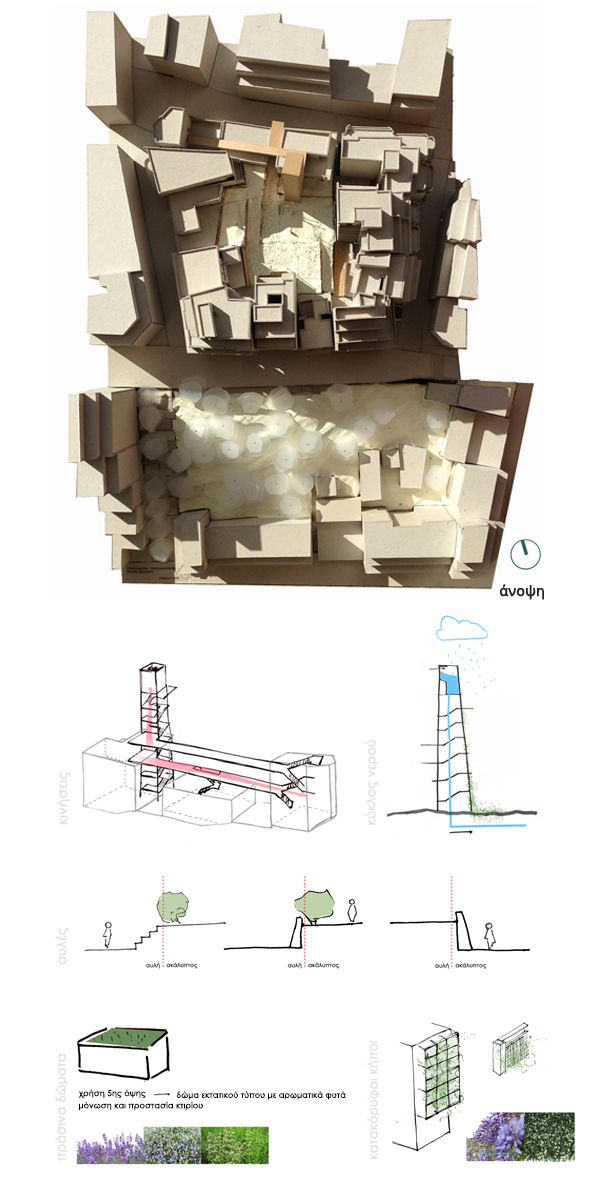
More specifically, the uses that are created at the buildings are directly related to the uses of the "akalyptos" area. Those uses are the following: creative activities for children and young people and a lending library (first building), a storage for the products of the crops, a communal kitchen and a communal laundry (second building), a shop that sells the products of the crops and a place for handicraft seminars (third building).
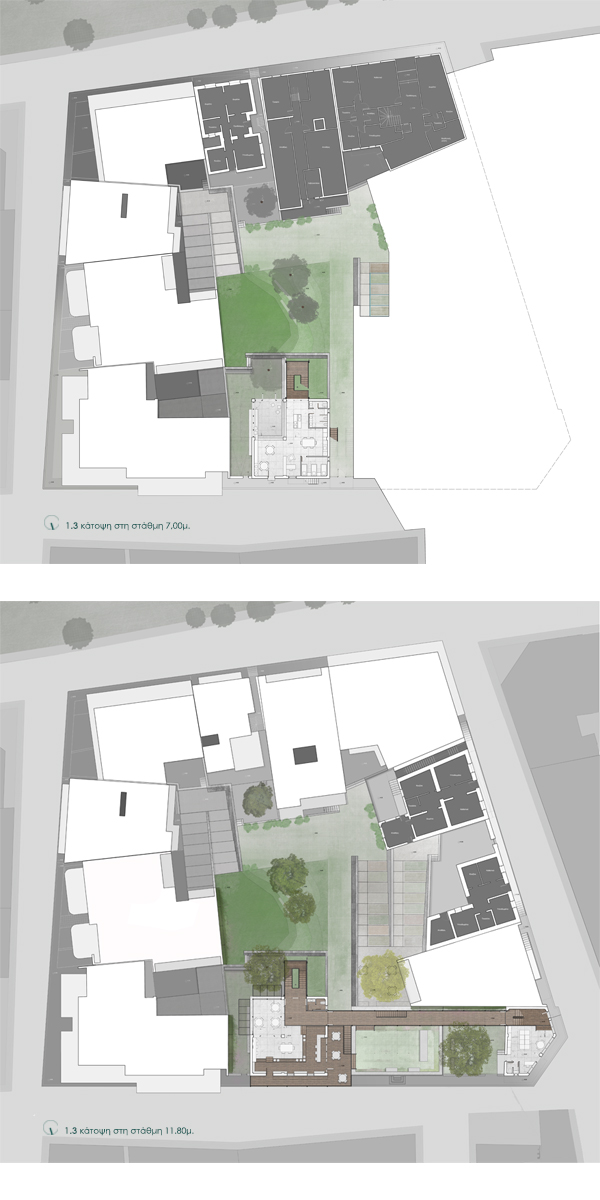
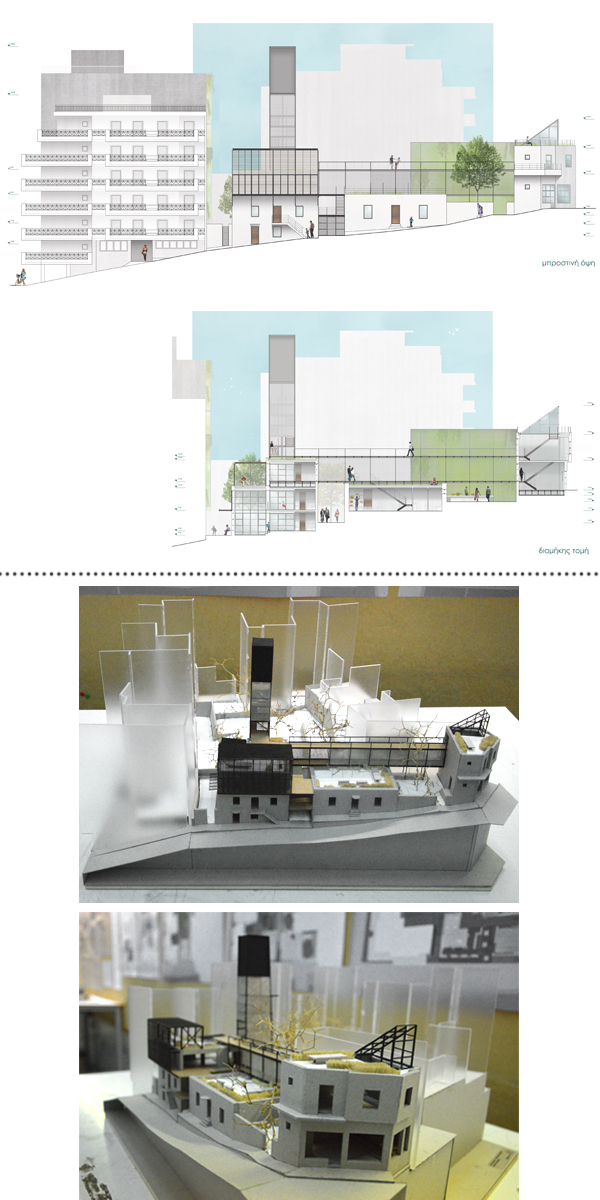
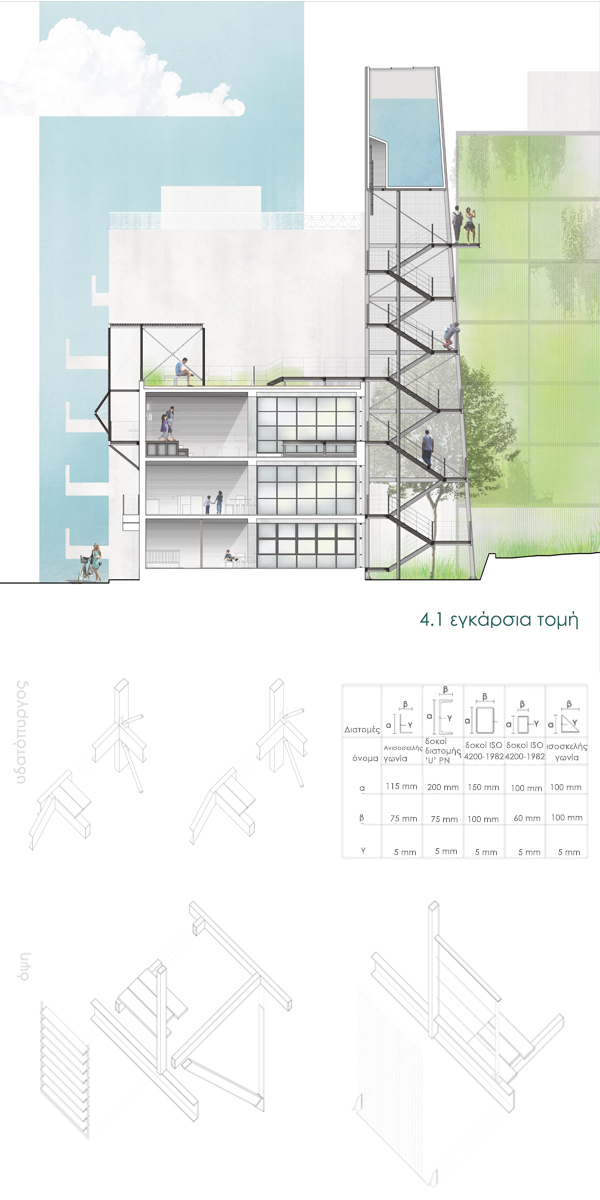
EPILOGUE
Through our proposal we would like to imagine a different city than the current one, which will be more eco-friendly and will be based on the principles of collectivity and sustainability.










